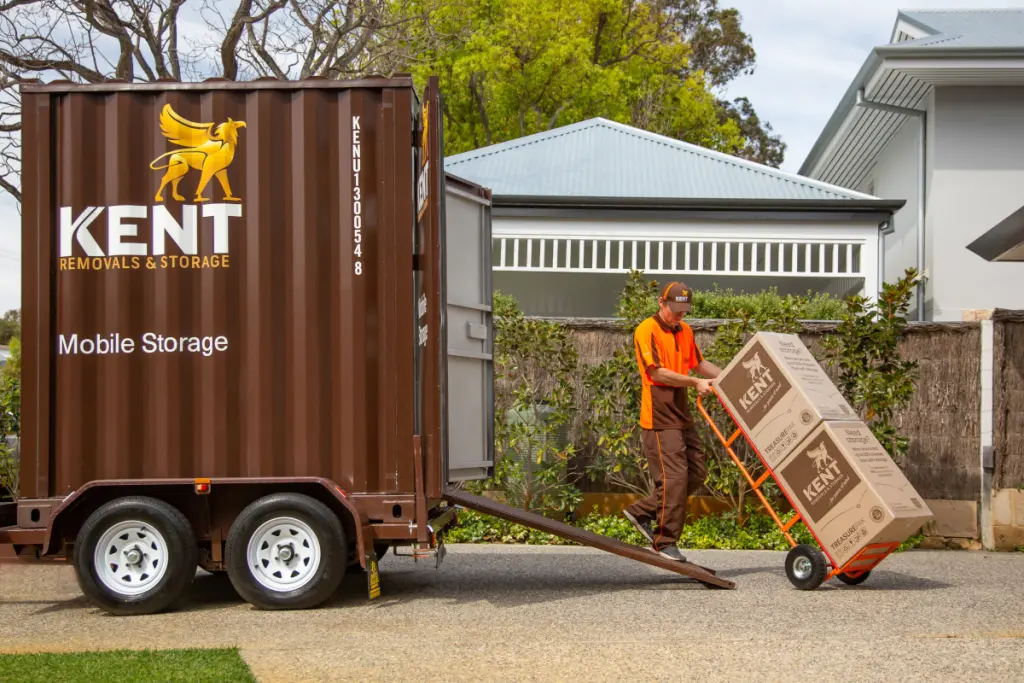Follow these expert tips on how to move a washing machine, to ensure moving washing machines easily, safety and securely:
Step 1. Empty your washing machine and thoroughly clean the inside
Step 2. Turn off the water and power supplies, and unplug
Step 3. Unfasten the water supply hose and detach the valves
Step 4. Install washing machine transit bolts
Step 5. Manoeuvre your machine onto a trolley
Step 6. Load your washer upright into a vehicle and secure.
Step 1: Empty Your Washing Machine and Thoroughly Clean the Inside
Before moving a washing machine, it’s a good idea to give it a clean. The best way to clean your washing machine is to run an empty wash on its warmest cycle. Replace your regular washing detergent or powder with a cleaning agent like bleach or white vinegar. This will ensure an optimal clean.
Once the cycle is finished, open the hatch and allow your machine to dry for 24 hours.
Step 2: Turn Off the Water and Power Supplies, and Unplug
Now that your machine is clean and dry, you can go ahead and turn off the water supply. Do this by rotating the water supply valves clockwise. Once completed, switch off the power to your machine by accessing your building’s electric panel. This will allow you to safely unplug the electricity supply to your machine.
Step 3: Unfasten the Water Supply Hose and Detach the Valves
Once Step 2 is completed, you’re ready to unfasten the water supply hose from the external valve. Most of the time, these valves are attached to the wall behind your machine. Make sure to disconnect the wall valves first, before detaching the valve connected to your machine itself. In both instances, you’ll need to turn the hose fitting anti-clockwise. A pair of slip-joint pliers will do the trick if you find the fitting is too tight.
During the hose detachment process, you may encounter residual water that is yet to drain away. Therefore, make sure to have a bucket or absorbent material at hand.
Step 4: Install Washing Machine Transit Bolts
If you find yourself asking the question: can I move a washing machine without the transit bolts? You’ll always get the same answer from Kent. Moving a washing machine without transit bolts will run the serious risk of damaging your machine, so we strongly advise against it.
Washing machine transit bolts are a vital piece of equipment required to move your washing machine securely. A washing machine is a complex piece of equipment with many moving parts. In particular, your washing machine’s drum suspension is susceptible to damage if the washing machine transit bolts are not securely in place. By installing your washing machine’s transit bolts, you will stabilise the drum, preventing damage to the suspension and other mechanisms.
The installation instructions for washing machine transit bolts differ between machines. So we recommend consulting your installation manual for help completing this step. However, you must remember to remove the transit bolts once your move is complete, as they can seriously damage your machine should you begin a wash cycle with them still in place.
Step 5: Manoeuvre Your Machine onto a Trolley
Now that your transit bolts are securely in place, you’re almost ready to move your washing machine. It’s worthwhile to give your machine a once-over wipe down before attaching some protective wrapping. If you’re working with professional washing machine movers, they will have the correct packaging material on hand. Otherwise, bubble wrap will do the trick.
When it comes to moving a washing machine, as with any large appliance, it’s highly recommended to work as a team. If you’re planning on moving without a professional team of removalists, then make sure to source a friend or moving helper to assist you during transit.
When you’re ready to proceed, begin by manoeuvring your washer away from the wall. When there’s enough space, gradually tip the washer backwards until you have enough space to slide your moving trolley underneath.
Once completed, strap the machine down to offer added security as you make the trip to your moving vehicle.
Step 6: Load Your Washer Upright into a Vehicle and Secure
Step 6 in particular requires a high degree of physical competency to complete safely. You need to manoeuvre your washing machine into the moving vehicle, whilst making sure your washer remains upright and secure.
Once you’ve managed to get the machine safely onto your trailer or moving van, we recommend tying your washer in place to limit the amount of sudden movement your machine is exposed to. This is the best way to protect your machine against damage during transit.
HOW TO MOVE WASHING MACHINE








